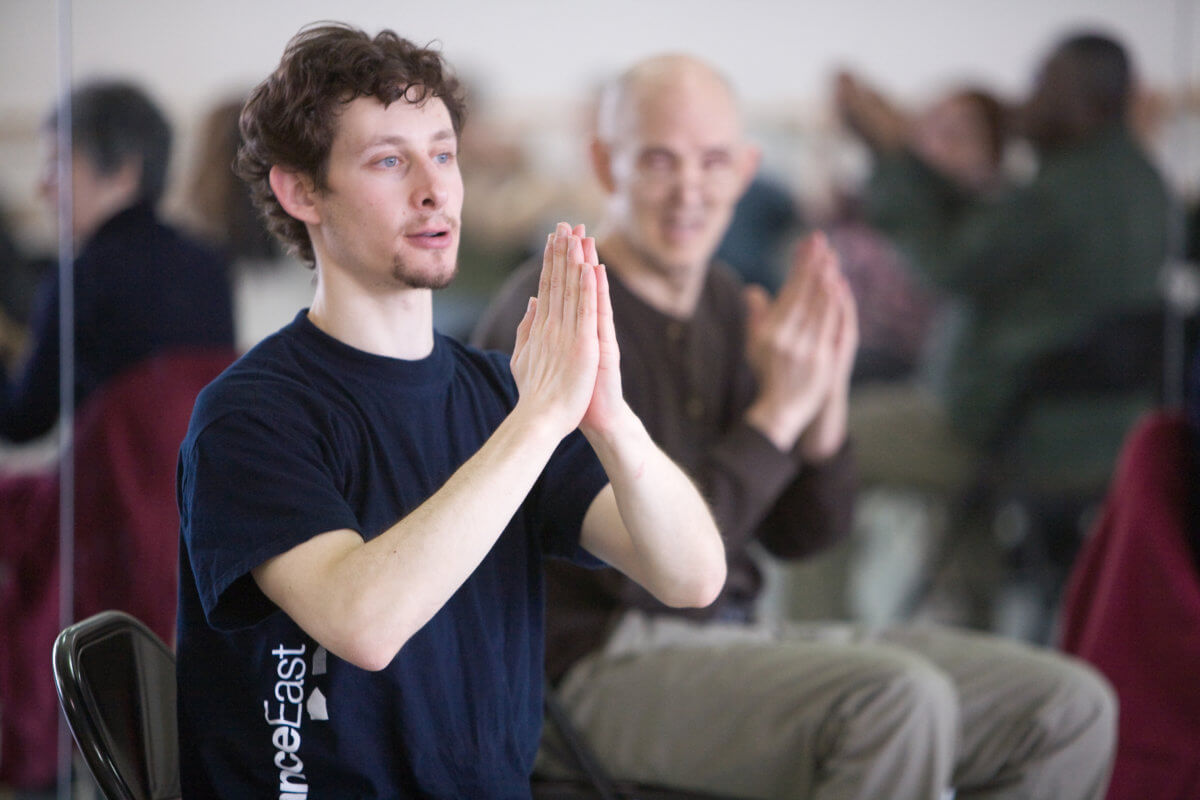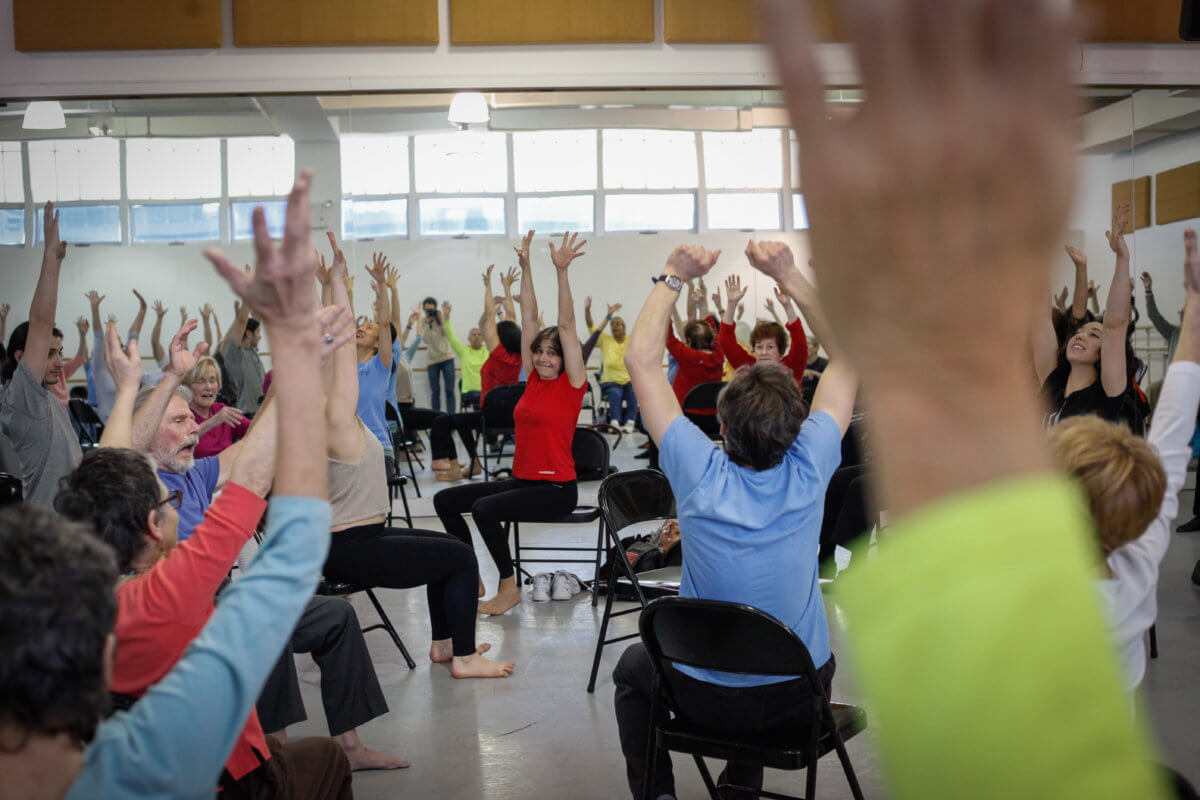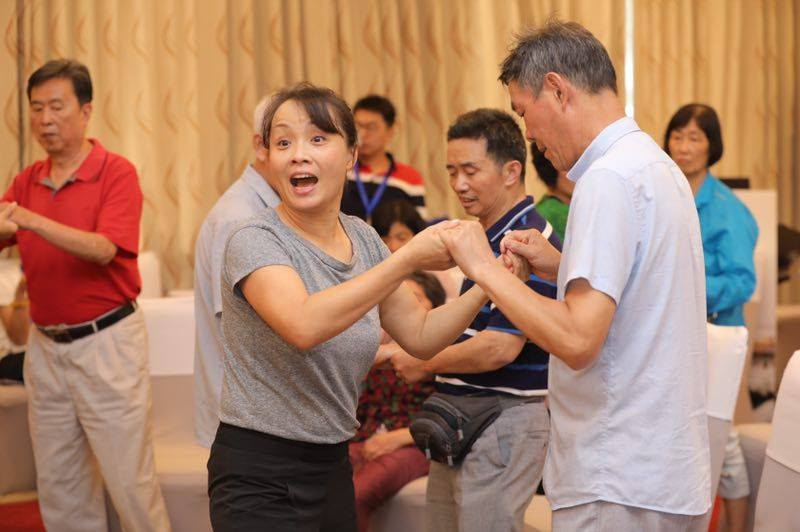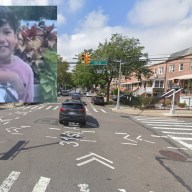Beginning next month, Queens Theatre is partnering with the Mark Morris Dance Group (MMDG) to present its internationally acclaimed Dance for PD program in English and Mandarin, making its adaptive dance program for people living with Parkinson’s disease accessible to millions of Mandarin-speaking people with mobility concerns globally.
The free classes will be held twice a month beginning Sunday, Jan. 9, at 2 p.m. in the Cabernet Theatre offering both in-person and online instruction. The program is open to people with Parkinson’s disease, their families, friends, and care partners, as well as anyone with mobility concerns.
“We are overjoyed and are thrilled to have this program here. It represents a really terrific opportunity for us to reach out to a part of our community that are our neighbors,” Jay Rogers of Queens Theatre said. “We have a very large Chinese community in Flushing and an opportunity for us to connect with them and to also provide this class as a service.”
According to Rogers, who has a close connection with MMDG and Dance for PD for over a decade, he had wanted to bring the program to Queens when he started working at Queens Theatre. However, due to the circumstances at the time, the opportunity wasn’t there, he said.
Now that Queens Theatre is able to partner with MMDG to serve the community, Rogers said he’s ecstatic about the program and its future, as they also plan for a series of bilingual classes in Spanish and English that will be launched in the spring.
“It’s kind of an amazing thing to watch people being able to reestablish their connections with their physical being in a way that has been degraded by this illness,” Rogers said. “This is where we are starting, but we’re hoping to expand it and make it a pillar of the community to provide that kind of assistance and service to people afflicted with the illness.”
In each class, participants engage with a teaching artist and each other during a 50-minute movement session based on ballet, modern, tap, jazz, traditional and cultural dance forms, and Mark Morris Company repertoire.
During the pandemic, the classes shifted to a virtual format and garnered more than 2,000 participants from 38 countries across the globe. Celebrating its 20th anniversary this year, Dance for PD now reaches more than 10,000 participants worldwide through its affiliate and online network.
Dance for PD in Mandarin is being led by specially trained instructors Coco Cao, Nico Li, and Jun Zhou. Each session includes a welcome and introduction, a 50-minute movement experience adapted for mobility issues often associated with Parkinson’s disease, and time for conversation in small groups. All classes feature live music accompaniment.
“Our Parkinson’s dancers want to relate to movement that they have a connection with, and that’s part of what is motivating for them,” David Leventhal, program director of Dance for PD, said. “In New York, that often means bringing in movement from Broadway shows or elements of traditions like Salsa that have deep roots in NYC.”

Evidence from more than 40 peer-reviewed scientific studies serves to underpin the effectiveness and benefits of the Dance for PD teaching practice.
The class has significant and measurable benefits on functional mobility, the ability to walk and balance, as well as cognitive function, mood, and sense of social engagement and social connection, Leventhal said.
While in-person classes are being taught, it will also be streamed on Zoom for those who are not comfortable or able to come to the facility.
The program, administered by MMDG, started as a unique collaboration between MMDG and the Brooklyn Parkinson Group (BPG). The program was launched in 2001, after BPG’s executive director Olie Westheimer approached MMDG with the initial idea for a class.
“Olie had a unique idea that a dance class taught by professional dancers could be beneficial for members of her support group,” Leventhal said. “She wanted it to be a program based on dance as an artform, not as a therapy or exercise group. Our approach is an artistic and creative one, which makes it transformative and motivating for people with Parkinson’s.”

In 2003, MMDG started to offer the program on tour in other cities where they performed. In 2008, the program expanded to Manhattan, Queens, Bronx and Staten Island.
According to Leventhal, the Queens Theatre has been an exceptional partner in planning out the rollout of the Dance for PD program.
“The Queens Theatre represents a really strong opportunity for this program to deepen its roots in Queens, and for us to engage with the Mandarin and Spanish speaking populations in Queens, which are significant in size, and we’re just thrilled to be able to work the Queens Theatre to expand programming for these populations,” Levanthal said.
For Leventhal, the class is not just about the language, but also culture.
“There will be featured dances from Spanish speaking cultures, primarily Latin. In Chinese cultural dances that are part of the history and cultural lineage of the people participating in the class, it’s that familiarity and respect of cultural forms from around the world that is as important as the language element,” Leventhal said.
All Dance for PD Classes will be bilingual in Mandarin and English, and future bilingual classes in Spanish and English are being planned to begin in March 2022.
The classes will take place on Sundays at 2 p.m. ET on Jan. 9 and 23; Feb. 13 and 27; and March 13 and 27. For more information, visit Queens Theatre or Dance for Parkinsons.

































